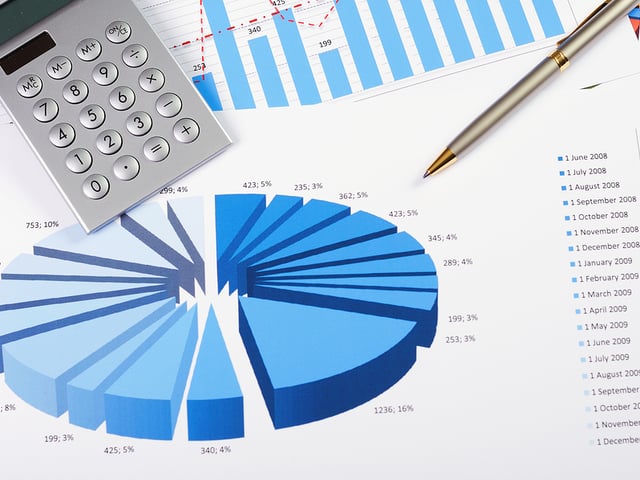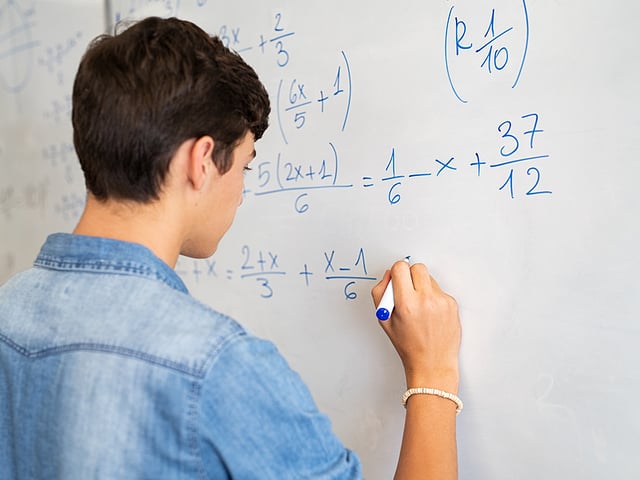
Important Data Analysis, Probability, and Statistics Formulas to Know for the ISEE Math Tests
To ace the Data Analysis, Probability, and Statistics questions on the two math tests on the ISEE, you need to be very careful! Questions of this type require top-notch accuracy, so you need to be able to select the appropriate formula for each problem. Union Test Prep has prepared charts of formulas for the 4 different areas of math. Our three other charts are linked here:
The chart below contains formulas for the area of Data Analysis, Probablility, and Statistics— the one with which you need to be the most careful. Be sure to practice the use of these equations by solving the free problems we have for you in our Mathematics Achievement and Quantitive Reasoning practice tests.
Data Analysis, Probability, and Statistics Formulas for the ISEE Math Tests
| Category | Formula | Symbols | Comment |
|---|---|---|---|
| Data Analysis, Probability, and Statistics |
\(Du=Su \cdot \dfrac{Du}{Su}=Su \cdot CF\) | Du = Desired Unit Su = Starting Unit CF = Conversion Factor |
Multiple steps may be needed. |
| Data Analysis, Probability, and Statistics |
\(a \cdot B\%=a \cdot \dfrac{b}{100}\) | a = any real number b% = any percent |
Remember to simplify if possible |
| Data Analysis, Probability, and Statistics |
\(\%=\dfrac{\vert b-a \vert}{b} \cdot 100= \dfrac{c}{b} \cdot 100\) | % = % increase or decrease a = new value b = original value c = amount of change |
|
| Data Analysis, Probability, and Statistics |
\(AE=MPV-MV\) \(RE=\frac{AE}{MV}\) \(\%E=RE \cdot 100\) |
AE = Absolute Error MPV = Maximum Possible Value MV = Measured Value RE = Relative Error %E = Percentage Error |
|
| Data Analysis, Probability, and Statistics |
\(\overline{x}=\dfrac{\Sigma x_i}{n}\) | \(\overline{x}\) = mean \(x_i\) = value of each measurement n = number of measurements |
|
| Data Analysis, Probability, and Statistics |
\(Md=(\dfrac{n+1}{2})^{th}\ term\) | Md = Median n = number of measurements (odd) |
|
| Data Analysis, Probability, and Statistics |
\(Md=\dfrac{(\frac{n}{2})^{th} term + (\frac{n}{2}+1) ^{th} term}{2}\) | Md = Median n = number of measurements (even) |
|
| Data Analysis, Probability, and Statistics |
\(s=\sqrt{\Sigma(x_i- \overline{x})^2/(n-1)}\) | s = standard deviation \(\overline{x}\) = mean \(x_i\) = value of each measurement n = number of measurements |
|
| Data Analysis, Probability, and Statistics |
\(V=s^2\) | V = Variance s=standard deviation |
|
| Data Analysis, Probability, and Statistics |
\(CV=RSD=100 \cdot \dfrac{s}{\overline{x}}\) | CV = Coefficient of variation RSD = Relative standard deviation s = standard deviation \(\overline{x}\) = mean |
|
| Data Analysis, Probability, and Statistics |
\(P(A \cup B)=P(A)+P(B)-P(A \cap B)\) | \((A \cup B)\) = Probability of A or B P(A) = Probability of A P(B) = Probability of B \(P(A \cap B)\)=Probability of A and B |
Rule of Addition |
| Data Analysis, Probability, and Statistics |
\(P(A \cap B)=P(A) \cdot P(B)\) | \(P(A \cap B)\) = Probability of A and B P(A) = Probability of A P(B) = Probability of B |
Independent Events |
| Data Analysis, Probability, and Statistics |
\(P(A \cap B)=0\) | \(P(A \cap B)\)=Probability of A and B | Mutually Exclusive Events |
| Data Analysis, Probability, and Statistics |
\(P(A \vert B)= \dfrac{P(A \cap B)}{P(B)}\) | \(P(A \vert B)\) = Probability of A given B P(A \cap B) = Probability of A and B P(B) = Probability of B |
Conditional Probability |
| Data Analysis, Probability, and Statistics |
\(P(B \vert A)= \dfrac{P(A \vert B) \cdot P(B)}{P(A)}\) | \(P(B \vert A)\) = Probability of B given A \(P(A \vert B)\) = Probability of A given B P(B) = Probability of B P(A) = Probability of A |
Bayes’ Theorem |
| Data Analysis, Probability, and Statistics |
\(P(x)= \dfrac{n!}{x! \cdot (n-x)!} \cdot p^x \cdot q^{n-x}\) | P(x) = Probability of x successes p = Probability of success in one trial q = 1-p = Probability of failure in one trial n = number of trials x = number of successes |
Binomial Distribution Formula |
| Data Analysis, Probability, and Statistics |
\(P(n,r)=\dfrac{n!}{n-r}!\) | P = number of permutations n = total number of objects in the set r = number of objects to be chosen from the set |
|
| Data Analysis, Probability, and Statistics |
\(C(n,r)=\dfrac{n!}{r! \cdot (n-r)!}\) | C = number of combinations n = total number of objects in the set r = number of objects to be chosen from the set |
Keep Reading

Independent School Entrance Exam Blog
Essay Writing Practice and Prompts for the ISEE
The writing test is always given with the ISEE, and it measures your ab…

Independent School Entrance Exam Blog
What Is “Quantitative Reasoning” on the ISEE?
Quantitative Reasoning (QR) is the use of basic mathematical skills to …

Independent School Entrance Exam Blog
How to Tackle the Math Achievement Questions on the ISEE Test
The Independent School Entrance Exam (ISEE) Mathematics Achievement sec…